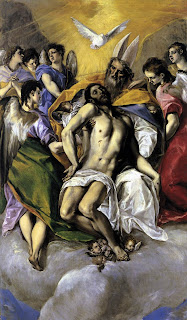This photo was taken on our next to last full day in Europe; we flew out at 7:30 AM two days later, ready to be home again after a month of hotels, restaurants, sore feet and… a wonderful vacation.
We arrived in Madrid on September 3, roughly 24 hours after leaving home, and took a taxi to our hotel (H on the map) three blocks from the Puerta del Sol, the center of Madrid
This is the Plaza de la Puerta del
Souvenirs are available.

The Plaza Mayor, lined with cafes, was our first stop after the Puerta del Sol. A little jet lagged, we slept through breakfast, but made up for it with a few tapas and a little wine.
Then, we walked down the Carrea San Jeronimo to this lovely fountian in the Plaza Canovas del Castillo….
…and from there to El Prado, where we saw the (depressing) El Grecos. We soon adjourned to the fresh air and sunshine.
The first, and most impressive, of the many castles we visited was Madrid Spain
Photos were not allowed inside, but Wikipedia provides us with some:

The throne room
The armory
The Almudena Cathedral, across the plaza from the palace.

After lunch we went to the Campo del Moro, the 19th century gardens behind the palace where Muslim ruller Alí Be Yusuf camped with his army in 1109.
And where I was reminded that abundant wine with lunch is probably not a good idea if an afternoon of walking is planned.
And walking is what we did most in
And we went dancing at a club for adultos mayores near our hotel. Unfortunately, there are no pictures. We also ate.
 And we spent most of a day buying train tickets. We planned to take the train to
And we spent most of a day buying train tickets. We planned to take the train to The Extremadura landscape was dry, treeless and brown, but gradually became forested with trees that looked like oaks and in some areas were planted in rows. We thought they might be cork oaks, and soon received confirmation, as we saw trees from which the bark had been removed revealing a reddish inner bark.
Plains of Extramadura
Cork oaks

We arrived at our hotel in Cásares around noon, and headed up hill to the old city, where we had comida (AKA lunch, but the main meal of the day) on the plaza mayor (lower left).
The plaza was full of open air restaurants, all offering a 10€ menú
And proceed thought narrow streets to the center.
Alejandra went inside the Iglesia de San Francisco

The plaque says: “Palace of the
At the door of the Palacio Episcopal Alejandra met the caretaker. Inside the doorway to the house on the left, occupied by a descendant of the Spanish nobility, we saw this patio.
Twenty-first century Cáceres is also a pleasant city. This parkway goes through the center of the business district.
From Cáceres, the only train to Lisbon






























No comments:
Post a Comment